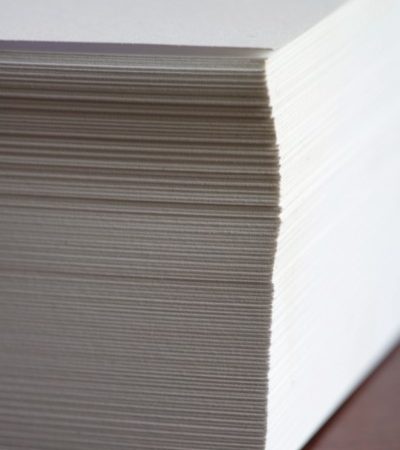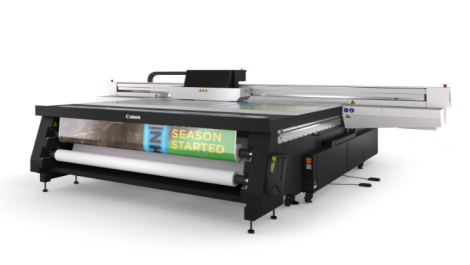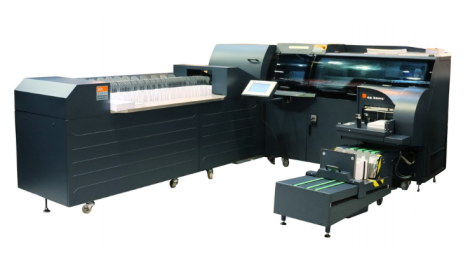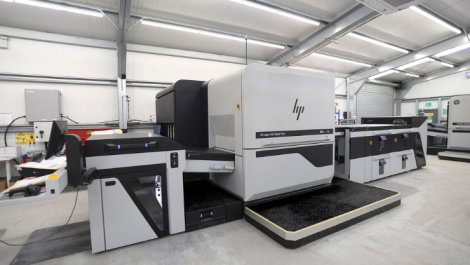The list of papers for digital printing is ever-growing, but what are the most popular? Nessan Cleary talked to several printers about the papers they use with their digital printers.
Paper is arguably one of the most important factors in a print job, so choosing your paper stock and getting the right balance of price and performance is critical to running a successful business. There is an enormous range of papers available for digital printers, far too many to list them all here, at least as far as cut sheet media for dry toner printers is concerned. Which stocks are digital print companies actually using though, and why?
Not surprisingly, no two printers that Digital Printer spoke to are using the same substrates, with each company’s approach being dictated by the needs of the customers they are serving. The most consistent theme was that today’s modern digital presses are capable of running a very wide range of media, no longer limited to those stocks designed for digital printers.
For example, Kevin Abraham, production manager for FT Solutions, questions whether digital papers are worth up to a 20% premium, saying, ‘We can run pretty much anything through the machine.’
Based in Hertford, FT Solutions is an in-house print room that also offers print and print management services to external clients. The company runs a Canon 7010 VPS, a 6010 VPS and an Océ 650, for colour work, with an Océ VarioPrint 2090 and 6150 for mono work, all with an Océ PrismaSync front end.
Mr Abraham keeps a number of papers but the three main ones in use are LumiSilk, Condat and Essential. LumiSilk is a wood free, multi-coated silk paper available in weights from 90 to 400 g/m2, and distributed in the UK via PaperCo. Condat is another wood-free coated paper, also with a silk finish, with a high whiteness. Essential, which comes from Premier Paper, is a family of different substrates for offset use, including uncoated, silk and gloss, sold in sheets and reels as well as boards.
FT has also used Océ’s Top Colour, which Mr Abraham says is very good. Top Colour is a range of uncoated papers that offers high whiteness and a smooth surface, which Océ claims reduces the amount of toner laid down.
Having a range of stocks gives Mr Abraham different options, depending on the job in hand. He explained, ‘It doesn’t have to be a high brilliant white sheet, but about 90% of our jobs are high quality, so I’m governed by what the type will look like on the media that I buy.’
He continued, ‘The Océ is very very good, the Essential pretty good, but the LumiSilk gets the best performance in terms of gloss on the sheet, and it’s not badly priced. We can run it as a standard stock, but if the customer is not bothered then we have the cheaper stocks.’
As Mr Abraham points out, designers will often specify certain stocks but are less bothered when they see the cost. FT also uses NCR, or no carbon required, papers that are typically used for printing delivery notes, invoices and internal forms. In addition, Mr Abraham said that he uses a fair bit of business card stock, mainly 350 g/m2 coated and uncoated board. ‘We have done a lot of experiments with business card board because of the limitations of the machines,’ he explained.
Keeping the paper temperature consistent with the printer is important, he noted, because it becomes too rigid if it gets too cold, but the biggest problem with digital print is cracking, ‘The machines draw the moisture out and the toner stays on the surface.’
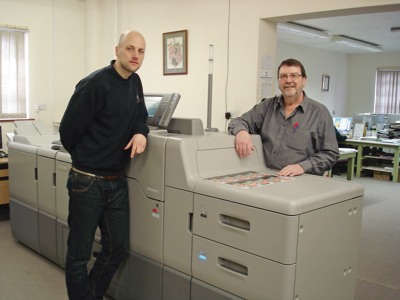
Stock control
Another common theme is that many companies prefer to limit the amount of different paper stocks that they carry. One of the most common stocks is Xerox’s Colotech. This is a brilliant white paper with a smooth surface designed specifically for colour laser printing. It is a coated paper available in gloss and silk finishes, in weights from 90 to 300 g/m2.
A typical customer is Abbey Print in Spalding, Lincolnshire, which runs a Ricoh Pro C751. The company does a lot of work for large supermarket chains and also runs two B2 Komori presses. Paul Houghton, a director, said that he uses Colotech, adding, ‘For the silk and gloss we use Novatech which is a litho paper rather than a true digital stock, but the Ricoh can print to that.’
Novatech is an FSC certified coated paper from Antalis. It is available in gloss and matt finishes, and from 90 to 350 g/m2, as well as boards. It is suitable for many print types including offset and digital and is said to have good whiteness and colour fidelity. Abbey Print chose it from a list of papers that were qualified to run on the press since one of the company’s existing suppliers carried it.
Mr Houghton explained, ‘The litho papers are getting better these days and I think the Ricoh runs at a lesser temperature so it’s not so critical.’
Previously Abbey would have tried various papers depending on which merchants were passing through. But as Mr Houghton pointed out, if people come back for a reprint there could be a slight change in the print, so it is easier to stick with the same stocks.

Paper as creative tool
For some clients, the ability to specify different papers is part of the creative process, so print service providers catering to this end of the market clearly have to be able to source a wide range of papers. Michael Burman, managing director of FE Burman, said that he regards paper as a sales tool, explaining, ‘We have a reputation for being able to print to almost any stock and a strong line of our business is being able to offer creative solutions based on different stocks.’
He also acknowledges the role played by the paper merchants, however, pointing out that they offer a wide range of stocks suitable for digital presses, and will deliver it very quickly. He added that Fedrigoni and DS Smith in particular allow him to order in just a few sheets of any one stock so that he does not have boxes of odd leftover sheets hanging around. He explained, ‘For the short run end of the market, the cost of paper is often a smaller proportion of the job than for long runs, so we can go to a more expensive paper if we want to.’
Mr Burman said that often an offset paper will give better colour with a digital press than with a litho press because the inks tend to sit on the surface of the substrate, adding, ‘We can happily print the same paper litho or digital, with only the odd application where we would sapphire treat them.’
Green credentials
The environment was another major concern for many users with quite a few companies using recycled stocks. Andy Steele, production manager for Kingswood Steele, said that uncoated 100% recycled papers are becoming more popular as customers seek to establish their green credentials, but that the cost of these papers does put some people off, making it hard to strike a balance. He added: ‘FSC is the way to go where it’s partly recycled, as it’s the 100% recycled stocks that are the most expensive.’
Kingswood Steele mainly uses Colotech but also runs a lot of uncoated papers, including Vision Superior, a brilliant white FSC-certified stock designed for offset but guaranteed for dry toner from 80 to 160 g/m2. It is available from Elliot Baxter. Kingswood Steele is based in London and does a range of general commercial work, including leaflets, brochures and marketing materials. It runs two Konica Minolta C8000s and three Xerox 700s, plus an Océ 6150 and four Konica Minolta 951s for mono work.
Sticking with the environmental theme, Headley Brothers had tried a number of different papers before settling on DigiGreen from Antalis McNaughton. Will Inshaw, digital print manager for Headley’s, said that the main reason was to maintain the 14001 certification, which calls for companies to continually improve their environmental stance. Digigreen is a green paper, certified by the FSC and made with 50% recycled fibre. It is available in gloss and silk finishes, from 100 to 350 g/m2. It is guaranteed for HP Indigo as well as dry toner machines and is suitable for most applications including books, direct mail and business cards.
Mr Inshaw commented, ‘It’s working well. Our customers like the sheet and we don’t have any problems with running it, but we have not had too many issues with paper on the Nexpress because of the way that it feeds the paper, and the fact that the paper path is quite straight. We run right down to 70 g/m2. It’s uncoated so it’s got a bit of bulk and even that runs.’
Perhaps surprisingly, price does not seem to be the main factor in choosing stocks, though understandably nobody wanted to pay a premium if a cheaper stock would do the same job. Instead, image quality and performance were the main criteria, with the flexibility of being able to run the same stock across different digital printers and offset presses also being important.
